A1C levels normal range. A1C Levels: Understanding Normal Range, Test, and Implications for Diabetes Management
What is the A1C test and how does it measure blood sugar control. How often should A1C levels be checked. What are the normal A1C ranges for diabetics and non-diabetics. How can lifestyle changes impact A1C levels.
What is the A1C Test and Why is it Important?
The A1C test, also known as the hemoglobin A1C or HbA1c test, is a crucial tool for assessing long-term blood glucose control in people with diabetes. Unlike daily blood sugar tests that provide a snapshot of glucose levels at a specific moment, the A1C test offers insight into average blood sugar levels over the past 2-3 months.
How does the A1C test work? It measures the percentage of hemoglobin proteins in red blood cells that have become glycated (bonded with glucose). The higher the percentage, the higher a person’s average blood glucose levels have been.
Key Benefits of the A1C Test:
- Provides a longer-term view of blood sugar control
- Doesn’t require fasting
- Less affected by short-term fluctuations than daily glucose tests
- Helps predict the risk of diabetes complications
Is the A1C test sufficient on its own for managing diabetes? While valuable, the A1C test should be used in conjunction with daily blood glucose monitoring for optimal diabetes management. The combination provides a comprehensive picture of both long-term trends and day-to-day fluctuations.
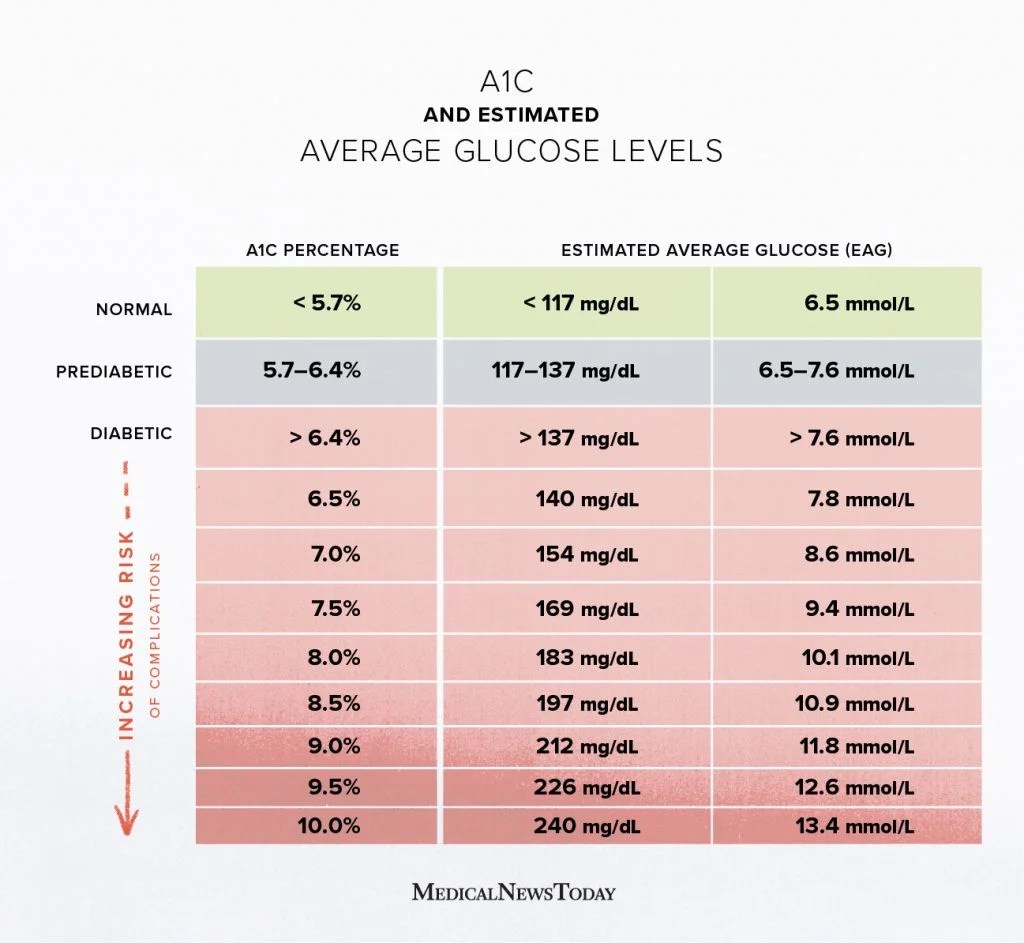
Understanding A1C Levels and What They Mean
A1C levels are reported as a percentage, representing the amount of glycated hemoglobin in the blood. But what do these percentages actually mean for your health?
A1C Ranges and Their Implications:
- Below 5.7%: Normal (non-diabetic) range
- 5.7% to 6.4%: Prediabetes range
- 6.5% or above: Diabetes range
Can A1C levels change over time? Absolutely. A1C levels can improve or worsen based on various factors, including diet, exercise, medication adherence, and overall health. This is why regular testing is crucial for people with diabetes or those at risk.
How do A1C percentages correlate to average blood glucose levels? Here’s a rough guide:
- 5% A1C = 97 mg/dL (5.4 mmol/L)
- 6% A1C = 126 mg/dL (7.0 mmol/L)
- 7% A1C = 154 mg/dL (8.6 mmol/L)
- 8% A1C = 183 mg/dL (10.2 mmol/L)
- 9% A1C = 212 mg/dL (11.8 mmol/L)
Frequency of A1C Testing: When and How Often?
The frequency of A1C testing can vary depending on an individual’s health status and diabetes management needs. Understanding the recommended testing intervals is crucial for effective monitoring and treatment adjustment.

General A1C Testing Guidelines:
- For people without diabetes: Screening recommended starting at age 45, repeated every 3 years if results are normal
- For people with well-controlled diabetes: At least twice a year
- For people with unstable or poorly controlled diabetes: Every 3 months
Are there situations that may require more frequent A1C testing? Yes, several factors can necessitate more frequent monitoring:
- Recent diabetes diagnosis
- Changes in diabetes medication or insulin regimen
- Pregnancy in women with diabetes
- Difficulty achieving blood sugar targets
Should you wait for your doctor to order an A1C test? While regular check-ups are important, being proactive about your health is key. If you have concerns about your blood sugar control or notice changes in your daily glucose readings, don’t hesitate to discuss more frequent A1C testing with your healthcare provider.
Factors Influencing A1C Levels: Beyond Blood Sugar
While blood glucose levels are the primary determinant of A1C results, several other factors can influence the test outcome. Understanding these variables is crucial for accurate interpretation of A1C results.

Common Factors Affecting A1C Levels:
- Red blood cell lifespan: Conditions affecting red blood cell turnover can skew results
- Certain medications: Some drugs can artificially raise or lower A1C readings
- Hemoglobin variants: Genetic variations in hemoglobin structure may impact test accuracy
- Recent blood loss or transfusions: Can temporarily affect A1C percentages
- Pregnancy: Increased red blood cell production can lower A1C levels
Do these factors mean the A1C test is unreliable? Not at all. For most people, the A1C test remains a highly accurate and valuable tool. However, awareness of these potential influences allows healthcare providers to interpret results in the context of an individual’s overall health profile.
How can you ensure the most accurate A1C results? Communicate openly with your healthcare team about your medical history, current medications, and any recent health changes. This information helps in proper test interpretation and personalized diabetes management.
Strategies for Improving A1C Levels Naturally
For individuals with elevated A1C levels, implementing lifestyle changes can have a significant impact on blood sugar control. While medication may be necessary for some, many people can achieve substantial improvements through natural methods.
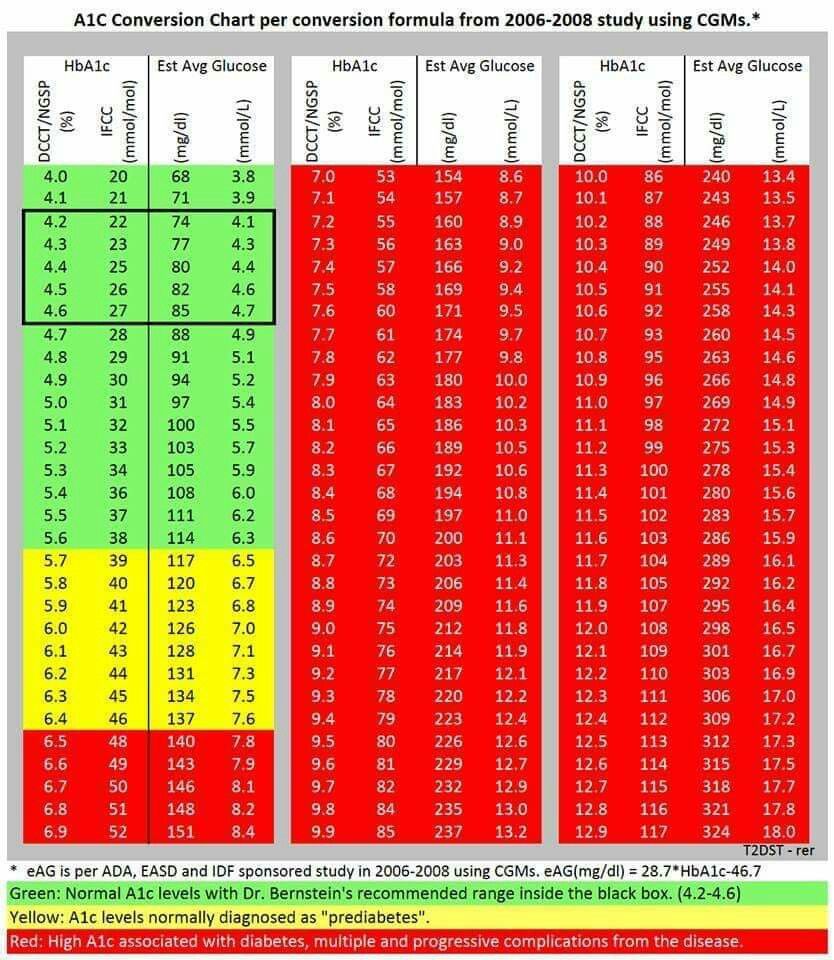
Effective Approaches to Lowering A1C:
- Dietary modifications:
- Focus on low-glycemic index foods
- Increase fiber intake
- Control portion sizes
- Limit refined carbohydrates and added sugars
- Regular physical activity:
- Aim for at least 150 minutes of moderate exercise per week
- Incorporate both aerobic exercise and strength training
- Consider activities like walking, swimming, or cycling
- Stress management:
- Practice relaxation techniques like meditation or deep breathing
- Engage in hobbies or activities you enjoy
- Ensure adequate sleep (7-9 hours per night for most adults)
- Weight management:
- Achieve and maintain a healthy body weight
- Even modest weight loss can significantly improve insulin sensitivity
Can lifestyle changes alone bring A1C levels into the normal range? For many people, especially those with prediabetes or early-stage type 2 diabetes, significant improvements in A1C levels are possible through lifestyle modifications alone. However, it’s crucial to work closely with your healthcare team to monitor progress and adjust your management plan as needed.

How quickly can you expect to see changes in A1C levels? Since the A1C test reflects average blood sugar levels over 2-3 months, it typically takes at least that long to see significant changes. Consistency in your lifestyle modifications is key to achieving and maintaining improvements in A1C levels.
The Role of Technology in A1C Monitoring and Management
Advancements in medical technology have revolutionized diabetes management, offering new tools for monitoring blood sugar levels and tracking A1C trends. These innovations can provide more comprehensive data and help individuals make informed decisions about their diabetes care.
Cutting-Edge Technologies for Diabetes Management:
- Continuous Glucose Monitors (CGMs): Provide real-time glucose readings throughout the day and night
- Smart Insulin Pens: Track insulin doses and timing, helping to optimize treatment
- Diabetes Management Apps: Offer features like food logging, medication reminders, and data analysis
- Artificial Intelligence (AI) Platforms: Analyze patterns in glucose data to provide personalized insights and recommendations
How do these technologies complement traditional A1C testing? While A1C remains a crucial measure of long-term glucose control, these new tools provide a more granular view of day-to-day glucose fluctuations. This detailed information can help individuals and their healthcare providers make more timely and targeted adjustments to diabetes management plans.
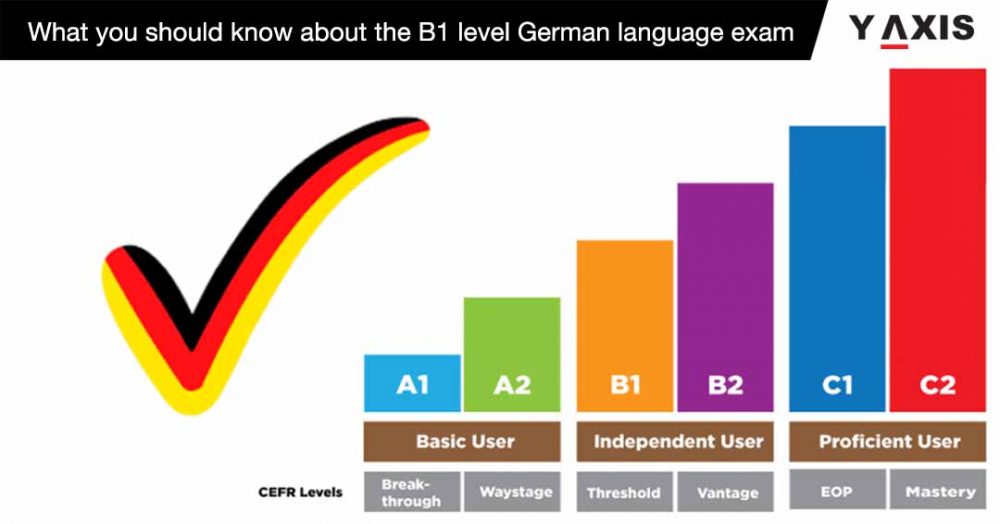
Are technological solutions right for everyone with diabetes? The suitability of advanced diabetes technologies depends on individual needs, preferences, and healthcare provider recommendations. Some people may benefit greatly from comprehensive monitoring systems, while others may prefer simpler approaches. It’s important to discuss the options with your healthcare team to determine the best approach for your situation.
Understanding the Limitations of A1C Testing
While the A1C test is a valuable tool in diabetes management, it’s important to recognize its limitations. Understanding these constraints can help individuals and healthcare providers use A1C results more effectively in conjunction with other diabetes management strategies.
Key Limitations of A1C Testing:
- Doesn’t show daily fluctuations: A1C provides an average, masking potential highs and lows
- May not reflect recent changes: Takes 2-3 months to fully reflect alterations in blood sugar control
- Can be affected by certain health conditions: Anemia, kidney disease, and liver disease can impact results
- Doesn’t capture glycemic variability: Wide swings in blood sugar may not be evident in A1C results
- Standardization issues: Different labs may produce slightly different results
Given these limitations, should we still rely on A1C testing? Absolutely. Despite its constraints, A1C remains one of the most valuable tools for assessing long-term glucose control. The key is to use it as part of a comprehensive diabetes management strategy, rather than as a standalone measure.
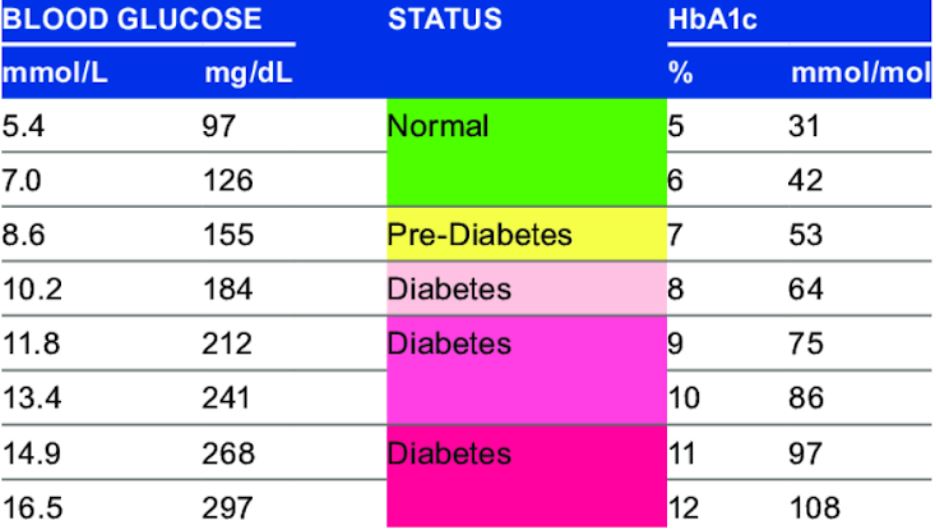
How can healthcare providers and patients overcome these limitations? By combining A1C results with other data sources such as daily blood glucose readings, CGM data, and clinical observations, a more complete picture of diabetes management can be formed. This multi-faceted approach allows for more personalized and effective treatment strategies.
A1C and Diabetes Complications: Understanding the Connection
The relationship between A1C levels and the risk of diabetes-related complications is well-established. Higher A1C levels over time are associated with an increased likelihood of developing various health issues. Understanding this connection can motivate individuals to strive for better glucose control.
Diabetes Complications Linked to Elevated A1C Levels:
- Cardiovascular Disease: Increased risk of heart attack and stroke
- Nephropathy: Kidney damage and potential kidney failure
- Retinopathy: Vision problems and potential blindness
- Neuropathy: Nerve damage leading to pain, numbness, and other issues
- Foot Problems: Increased risk of infections and amputations
How much does lowering A1C reduce complication risk? Studies have shown that even small reductions in A1C can significantly lower the risk of diabetes complications. For example, a 1% reduction in A1C has been associated with a 21% decrease in diabetes-related deaths and a 37% decrease in microvascular complications.

Is there a threshold A1C level below which complications are unlikely? While lower A1C levels generally correlate with reduced complication risk, there’s no absolute “safe” threshold. The American Diabetes Association recommends an A1C target of less than 7% for most adults with diabetes, but individual goals may vary based on factors like age, overall health, and risk of hypoglycemia.
How quickly can complication risk be reduced by improving A1C? While some benefits of improved glucose control can be seen relatively quickly, the full impact on complication risk typically takes years to manifest. This underscores the importance of consistent, long-term management of A1C levels.
The Future of A1C Testing and Diabetes Management
As medical science and technology continue to advance, the landscape of diabetes management, including A1C testing, is evolving. New approaches and innovations promise to enhance our ability to monitor and control blood glucose levels, potentially leading to better outcomes for people with diabetes.
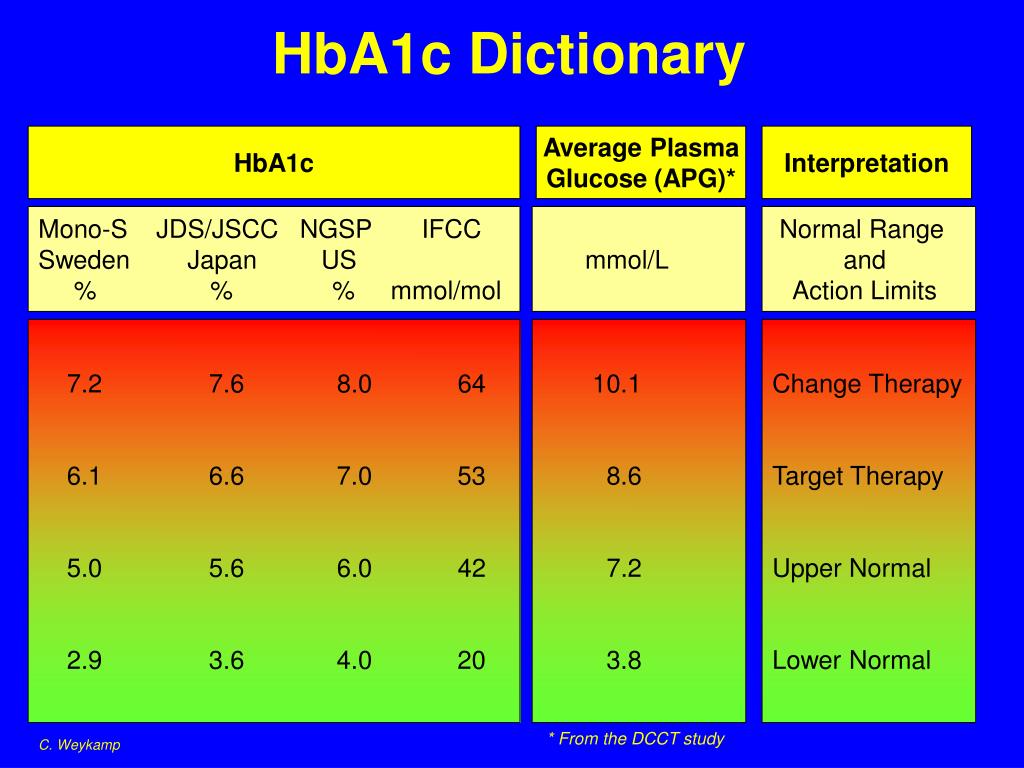
Emerging Trends in Diabetes Care:
- Artificial Pancreas Systems: Combining CGM with automated insulin delivery for more precise glucose control
- Gene Therapy: Potential treatments targeting the underlying causes of diabetes
- Personalized Medicine: Tailoring diabetes management strategies based on individual genetic profiles
- Non-Invasive Glucose Monitoring: Development of technologies that can measure blood sugar without the need for blood samples
- Improved Insulin Formulations: Faster-acting and longer-lasting insulins for more flexible diabetes management
How might these advancements impact A1C testing? While A1C is likely to remain an important measure, future diabetes management may rely more heavily on real-time data and predictive analytics. This could lead to more dynamic and responsive treatment approaches, potentially reducing the emphasis on quarterly A1C checks.
What challenges need to be overcome in diabetes care? Despite significant progress, several hurdles remain, including:
- Improving access to advanced diabetes technologies for all patients
- Addressing the rising global prevalence of diabetes
- Developing more effective strategies for diabetes prevention
- Enhancing patient education and support for long-term diabetes management

As we look to the future of diabetes care, the goal remains clear: to improve the lives of people with diabetes by providing more effective, less burdensome management strategies. While A1C testing will likely continue to play a role, it will be part of an increasingly sophisticated and personalized approach to diabetes care.
Check HbA1c Normal Range, Levels, Meaning & Full Form
Last updated on August 30th, 2022
Haemoglobin is a kind of molecule that is present in red blood cells and helps in carrying oxygen to the body’s tissue. The full form of hba1c is haemoglobin A1c or HbA1c or glycosylated haemoglobin. It is a form of haemoglobin that contains sugar. Read this blog to know what the hba1c test means, the normal range of hba1c chart in detail with cost, and how 1000s of people have been able to achieve normal HbA1c levels through the Diabetes Reversal Method.
HBa1c test chart normal ranges
Diabetics have a higher amount of glycosylated haemoglobin levels is contrary, unlike non-diabetics. Thus, to meet a controlled level of blood sugar, it is better to do HbA1c tests.
Table of Contents
Need to Monitor HbA1c Level
Blood Glucose levels can fluctuate every minute depending upon your activity and the food you eat. Therefore, it is important to regularly monitor your blood glucose or sugar levels as it helps in understanding how your blood glucose levels are changing and how your meals are affecting them. But a proper diet plan with constant push and motivation can help you regulate your blood glucose levels.
But a proper diet plan with constant push and motivation can help you regulate your blood glucose levels.
Generally, urine tests and daily prick methods were used to measure sugar levels in people with high blood sugar levels. Although these tests are somewhat accurate but can give false reports at times. HbA1c test is helpful in measuring average blood sugar levels over the past 2-3 months. People with diabetes are required to get this test done regularly so that they can keep a check on their blood sugar levels. This ultimately helps in diabetes management.
Improving lifestyle, i.e sleeping patterns, controlling the diet (what and how much to eat), and proper fitness guidance is helpful in maintaining a healthy and hba1c normal range for life. I have seen people reducing their HbAc1 from 9.8 to 5.6 during the Diabetes Reversal Program.
Also Read: Normal Blood Sugar Levels Chart
How Often is HbA1c Test Required?
As per the ADA, diabetes screening is recommended in people with age more than 45 years (every 3 years). Also, it is fine to perform screening at any age, in case a person has risk factors like:
Also, it is fine to perform screening at any age, in case a person has risk factors like:
- Being obese or physically inactive
- Having close relative suffering from diabetes
- Had diabetes during pregnancy (referred to as gestational diabetes)
- Having symptoms of insulin resistance or conditions related to insulin resistance like hypertension, low good cholesterol, high triglycerides, as well as polycystic ovary syndrome
Patients having diabetes with stable blood sugar levels must go for an hba1c test roughly twice a year. Your doctor might recommend quarterly monitoring (every 3 months) in case of:
- A recent diagnosis of diabetes
- Pregnancy-related diabetes
- Altering HbA1c levels
- Modifications in treatment or insulin dose
- A history of hypoglycemia (low blood glucose)
Read More: Signs and Symptoms Of Diabetes
Reasons for Fluctuations in HbA1c Normal Range
Use of Insulin, fasting, oral intake of glucose, or frequent fluctuations in your blood sugar levels are the most common reasons for the alteration in glycosylated hemoglobin levels. If people with diabetes notice the fluctuations in their glycosylated Hb level, they should consult doctors to maintain their HbA1c levels at the normal range. This helps in reducing risks and avoiding complications due to diabetes.
If people with diabetes notice the fluctuations in their glycosylated Hb level, they should consult doctors to maintain their HbA1c levels at the normal range. This helps in reducing risks and avoiding complications due to diabetes.
Getting rid of Insulin and other medications by proper sleeping, eating, and workout habits sounds impossible. But I have come across many people who have been able to regularise their Glycosylated Haemoglobin Levels and live a healthy life after successful Diabetes Reversal.
Also Read: List of Important Blood Sugar Tests
The Measure of Glucose in Glycosylated Haemoglobin
In the glycosylated hemoglobin test (A1c test), the percentage of hemoglobin that is bound to glucose is measured. The average concentration of blood glucose is reflected in this test after three months. The glycosylated hemoglobin can be measured in percentage or in units of mmol/mol. This is now a standard unit in which glycosylated hemoglobin is measured all over the world.
Read More: Best Glucometers to Buy in 2022
Know Your Normal Range of HbA1c With the Help of a Chart
hba1c normal range chart
Levels of HbA1c For Normal, Pre Diabetic, and Diabetic Person
People can have different normal ranges of HbA1c. Here you can check out with the help of the hba1c normal range chart, what should be the normal levels of glycosylated hemoglobin for individuals:
- In Non-Diabetic People: Several reports have revealed that the complications of diabetes can be reduced if your HbA1c test range is below 7%. A healthy person can have HbA1c measure less than 6% of the total hemoglobin. Below 6.0%, or below 42 mmol/mol is the normal value of hba1c for a non-diabetic adult.
- In a Pre-Diabetic Person: If your blood sugar levels are slightly higher than the normal range then you are a pre-diabetic person. Your diabetes levels are not too high to be considered type-2 diabetes.
 With a proper lifestyle and diet management, you can control your diabetes at this level through Diabetes Reversal Method and can attain a normal range of HbA1c values is 6.0% to 6.4%, or 42 to 47 mmol/mol.
With a proper lifestyle and diet management, you can control your diabetes at this level through Diabetes Reversal Method and can attain a normal range of HbA1c values is 6.0% to 6.4%, or 42 to 47 mmol/mol. - In Diabetic People: Any person suffering from type-2 diabetes then your normal value is 6.5% or above, or 48 mmol/mol or above. This hba1c test range may be normal but there is a need for proper guidance from doctors and medications along with healthy lifestyle changes to maintain the range. If your value goes beyond the mentioned range then it can increase the risk of heart stroke, peripheral artery disease, glaucoma, diabetic foot, diabetic kidney disease, and more.
Over 10000 pre-diabetic and diabetic people have successfully come from the orange and red zone (dangerous, deadly) to the green zone (optimal, super optimal) by making sustainable lifestyle changes. A few people I know didn’t believe that diabetes reversal is possible or one can be off diabetes and other medications before they got on a call with us. They believed, worked towards their goal with proper guidance of coaches, and are now Diabetes free.
They believed, worked towards their goal with proper guidance of coaches, and are now Diabetes free.
Read More: Can Diabetics Eat Jaggery?
HbA1c Target Levels in Diabetics
A person’s target A1C level is set on the basis of several factors. The right target differs from individual to individual. For any diabetic patient, the target A1C level might be based upon:
- Age
- Overall health
- Pregnant or not
- History of diabetes
- Their recommended treatment plan
- Any complications from diabetes
- An individual’s treatment priorities
A Healthcare Provider May Suggest a Target of A1C levels Under 6.5% if an Individual:
- Is young and has a long-life expectancy
- Has a history of diabetes over a short period
- Is successfully managing his or her diabetes via lifestyle alterations or metformin alone
A Healthcare Provider May Suggest a Target of A1C levels of 7.
 0–8.5% if a Person:
0–8.5% if a Person:
- Is older and has a shorter life expectancy
- Has a history of diabetes over a longer period
- Has other chronic medical problems
- Suffering from diabetes which is difficult to manage, even with multiple drugs
- Has experienced diabetic complications
- Has a history of serious hypoglycemia
Read More: Natural Remedies to Control your Diabetes at Home
Not all High Values of HbA1c Tests Means You are Diabetic
If you get a high HbA1c level, it does not mean that you are suffering from high diabetes. Many people come with different types of haemoglobin, except type A. The condition is hemoglobinopathy. It states the high or low values of HbA1c.
If you are anemic or struggling with iron deficiency in your body then also you are likely to get the wrong values on the average of 3-month diabetes test. Therefore, if you want the average of 3 months of blood glucose tests done, make sure you are not anemic.
There are some medications also well which can alter your results of glycosylated hemoglobin test levels. These include:
- Supplements like Vitamin C or E, iron, vitamin B12, and folate
- Erythropoietin therapy
- Aspirin
- Antiviral and antimicrobial medicines.
If you are going for a glycosylated hemoglobin test, your doctor will make sure of the factors that can affect your test results.
Quantity and quality of food can have a great impact on your haemoglobin levels, which can get you incorrect values. There was a patient who had high-level stress of being diabetic because of high HbAc1 level. With stress comes so many other problems like insomnia, fatigue, low energy levels, suicidal thoughts etc. After consultation calls and joining the Diabetes Reversal Program, he is now enjoying a healthy lifestyle. This lifestyle includes nutritious food products available in the kitchen. And all the products suit his body, also he can do exercises at home or at office.
Book your consultation with a Diabetes expert now. Diabetes Specialists assist in transforming lifestyles. They deal with the emotional issues that this condition can bring. With a unique blend of interconnected technology and human touch, a person can stay connected to our diabetes-focused holistic support all over the day.
What Causes High or Low Haemoglobin A1c Levels?
The level of haemoglobin A1c is largely dependent upon the blood sugar levels. The higher the blood glucose (sugar) level, the higher the amount of haemoglobin A1c. The higher the value of HbA1c, the greater the risk of experiencing complications associated with diabetes. Somebody who has had unmanaged diabetes for a long time may have a level of more than 8%. Factors responsible for altering the levels of haemoglobin A1c include:
- Oral or intravenous glucose consumption
- Fasting
- Insulin usage
- Combinations of any of the above-stated factors
Individuals with ailments influencing haemoglobin, like anaemia, might get ambiguous outcomes with this test. Other things that might influence the outcomes of the haemoglobin A1c involve supplements including vitamins C and E as well as high cholesterol levels. Kidney ailments and liver ailments are also seen to affect the test.
Other things that might influence the outcomes of the haemoglobin A1c involve supplements including vitamins C and E as well as high cholesterol levels. Kidney ailments and liver ailments are also seen to affect the test.
Also Read: Indian Diet Chart for Diabetics
How Does A1c work?
A1c testing depends upon haemoglobin. haemoglobin is present in the person’s RBC and transfers oxygen all through the body. When glucose is present in the blood, it sticks (glycates) to the haemoglobin. Higher amount of glucose in the blood results in more sticking to the haemoglobin. The A1c test assesses the average sugar sticking to haemoglobin over time.
What are A1C and eAG and What are the Differences?
If a person is diabetic and tracks his or her blood sugar levels, then the physician may report A1C results as eAG. The reporting of eAG results occurs in milligrams per deciliter (mg/dl) or millimoles per liter (mmol/l) units. For instance, 7% A1c level is equal to eAG of 154 mg/dl or 8.6 mmol/l.
For instance, 7% A1c level is equal to eAG of 154 mg/dl or 8.6 mmol/l.
Does Low Haemoglobin Affect A1C?
Low hemoglobin has a straightforward relationship with the levels of HbA1c. This means that haemoglobin level drops when hemoglobin levels dropdown.
There are so many food items in our kitchen that are full of nutrients but most of us are not aware of those. As I recall, a patient over the consultation call told us about her not wanting to consume supplements to fulfill her nutrient requirements but was looking for a diet that includes staple food. A personal diet coach helped her with a diet chart, customised according to her body requirements and easy to follow for life.
Haemoglobin A1c Conversion Chart (HbA1c chart)
Till now there is no specific guideline by concerned health organizations for using haemoglobin A1c test as the tool to screen diabetes. However, HbA1c high values indicate that a person may have diabetes.
The following chart shows the correlation between HbA1c levels and average blood sugar levels.
| HbA1c Test Normal Range Chart | ||||
|---|---|---|---|---|
| A1(%) | Mean blood sugar (mg/dl) | |||
| 6 | 135 | |||
| 7 | 170 | |||
| 8 | 205 | |||
| 9 | 240 | |||
| 10 | 275 | |||
| 11 | 305 | |||
| 12 | 340 | |||
Studies have shown that 1% reduction in HbA1c glucose level reduces the risk of microvascular diseases up to 10%. Thus, when you get closer to HbA1c normal level, the absolute risk of microvascular diseases or complications also gets lower.
Also Read: C-Reactive Protein or CRP Normal Levels Chart For Adults
Benefits of HbA1c Test Over Other Diabetes Tests
Choose the HbA1c test over other diabetes tests due to its many benefits. Some of the benefits include:
- No need for preparations: For the HbA1c test, there is no need for preparations in advance.
 A person can do this test at any time of the day. But, the other diabetes tests need fasting. For this test, a person has to fast for at least 5-6 hours. After the fasting test, there is another following meal blood test. This helps in giving the levels of your blood sugar post-meal.
A person can do this test at any time of the day. But, the other diabetes tests need fasting. For this test, a person has to fast for at least 5-6 hours. After the fasting test, there is another following meal blood test. This helps in giving the levels of your blood sugar post-meal. - No special diet to follow: An oral glucose tolerance test also diagnoses diabetes. There is a need to follow a special diet for 3 days before this test. Along with this, a person has to fast overnight before the test. Yet, while going for an HbA1c check, a person may eat or drink anything as per liking.
- Convenient and time-saving: Within some hours, many blood tests are done. This helps to detect blood sugar levels in several other tests to diagnose or check sugar levels. Yet, HbA1c is a single blood test. A person even gets the HbA1c report within 24 hours of the test and the procedure is also easy.
Limitations of Measuring Value of Haemoglobin A1c
A Haemoglobin a1c blood test is not suitable if a person is highly diabetic. The blood sugar level does not affect the values of HbA1c. A person also cannot diagnose the presence or absence of hypoglycemia or hyperglycemia. Besides, a person can get the false high value of HbA1c levels in conditions like:
The blood sugar level does not affect the values of HbA1c. A person also cannot diagnose the presence or absence of hypoglycemia or hyperglycemia. Besides, a person can get the false high value of HbA1c levels in conditions like:
- Kidney failure
- High intake of alcohol
- Anemia
- Thalassemia
- Sickle cell disease
Also Read: Do Antibiotics Raise Blood Sugar
What are the Advantages of Reducing HbA1c?
Some recent studies depicted that an improvement in HbA1c by 1% (or 11 mmol/mol) for individuals experiencing type 1 diabetes or type 2 diabetes reduces the risk of microvascular complications by 25%.
Microvascular complications can be:
- Neuropathy
- Retinopathy
- Diabetic nephropathy (renal disorder)
Studies have also found that individuals suffering from type 2 diabetes who lessen their HbA1c level by 1% are:
- 19% less expected to experience cataracts
- 16% less expected to experience heart failure
- 43% less expected to experience amputation or death as a result of peripheral vascular disease.

Also Read: Effects of Having Madhunashini Vati in Diabetes
Natural Ways to Bring Normal Range of HbA1c
Those who have higher levels of HbA1c can bring down the level of HbA1c to the normal range through medications. Apart from this, there are some natural ways as well which can bring your HbA1c normal. These include:
- Quit smoking to get haemoglobin A1c levels down.
- You should eat a balanced and healthy diet to maintain the immune system and hormonal balance.
- Exercising is another natural way to control the increased glycosylated haemoglobin levels and it helps in losing weight and lowering blood sugar which ultimately results in enhancing insulin sensitivity.
- Adopt a healthy lifestyle to keep your blood sugar levels in control.
You can easily achieve this without disturbing your daily schedule like Ms. Dheeraj Sabharwal who has been able to reduce her HbA1c level from 9. 8 to 6.2 by switching to a healthy lifestyle with the constant support and motivation of a Diet Coach, Fitness Coach the Diabetologist. She has successfully reversed diabetes while pursuing her teaching profession and also taking care of the family.
8 to 6.2 by switching to a healthy lifestyle with the constant support and motivation of a Diet Coach, Fitness Coach the Diabetologist. She has successfully reversed diabetes while pursuing her teaching profession and also taking care of the family.
Also Read: Top 10 Homeopathic Medecines for Diabetes
FAQ’s:
What is a good A1C level for type 2 diabetes?
An A1c objective in the range of 7% to 8% is sensible and advantageous for many type 2 diabetics. Even if, if lifestyle modifications may get that number lower, then aim for it.
Is HbA1C 8.5 normal?
For non-diabetics, the normal HbA1c level ranges between 4% and 5.6%. The levels between 5.7% and 6.4% indicates prediabetes and a greater possibility of diabetes. HbA1c of 6.5% or greater indicates diabetes.
What are the symptoms of high HbA1C?
Signs of high HbA1C may include fatigue, urinating more often, weight loss, and irregular thirst.
Can HbA1C be high without diabetes?
As per research studies, 3.8% of non-diabetics have a raised A1C level (above 6.0). This class is perhaps found to have other risk factors for heart problems or type 2 diabetes.
Can I drink water before HbA1C test?
Yes, you can have water on empty stomach prior to a blood test. Actually, drinking enough water makes sure that you get precise test results. Dehydration may have an effect on blood tests like electrolyte, cholesterol, and BUN tests.
What is HbA1C test used for?
HbA1c test is another term for glycated hemoglobin test. It is useful for evaluating average blood glucose levels for previous three months. HbA1C is vital for every diabetic patient.
What is normal a1c levels for non diabetics?
The normal value of HbA1c blood test for non-diabetics is between 4% to 5.6%. i.e between 68 to 100 mg/dL
What does a1c stand for?
When the glucose binds to hemoglobin (Hb) it becomes Glycated hemoglobin HbA1c. A stands for adult and HbA1c is the most common type of hemoglobin present in blood that binds to glucose. Thus this test measures the amount of glucose binded to HbA1c.
A stands for adult and HbA1c is the most common type of hemoglobin present in blood that binds to glucose. Thus this test measures the amount of glucose binded to HbA1c.
What is hba1c glycated haemoglobin used for?
HbA1c test or Glycosylated hemoglobin test is a blood test carried out to find out whether you are diabetic or not. Glucose in our body binds to hemoglobin present in the blood. Thus, this blood test calculates the amount of glucose that binds to hemoglobin. Hemoglobin have a lifespan of 3 months. Thus, this test value gives the average amount of glucose present in the blood for past 3 months.
How does a1c test work?
HbA1C test works by measuring the amount of glucose that binds with the hemoglobin. A blood sample is drawn fromthe patient and the amount of binded hemoglobin and glucose is measured in percentage. If the values are less than 5.7 then the result outcome is normal.
What does the hba1c test indicate?
The Hemoglobin A1c blood test value measures the average amount of glucose present in the blood for the past 3 months.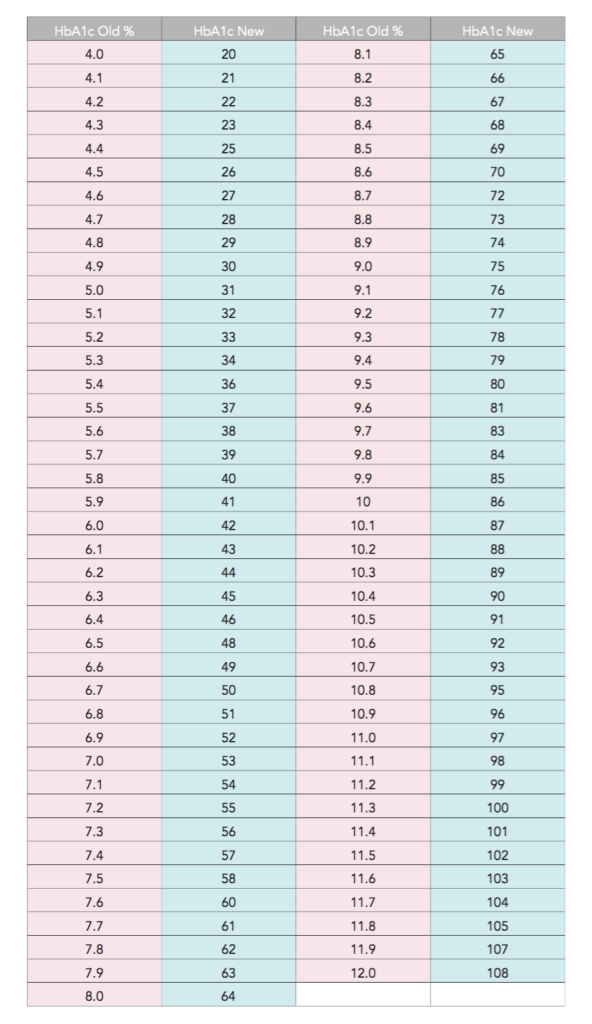 Thus, if the value is high it indicates prediabetics or diabetes.
Thus, if the value is high it indicates prediabetics or diabetes.
Is fasting required for hba1c test?
The HbA1c (Hemoglobin A1c) is a very effective test for diabetes diagonsis. There is no need to fast before the test. You can eat and drink before getting tested.
What is hba1c in blood test?
HbA1c is known as glycosylated hemoglobin test. This blood test is used to find out the average blood sugar levels for 3 months. It does by calculating the amount of glucose that binds to hemoglobin.
How much does hba1c test cost?
The HbA1c (Hemoglobin A1c) is a blood test carried out for diabetes diagonsis. It can cost from INR 300 to INR 800. Price varies from city to city and as per patient preference like sample collection from home.
What is the normal hba1c level?
HbA1c (Hemoglobin A1c), blood test measures the average blood sugar levles. The normal levels for this test is a value betwee 4% and 5.6%. Values in the range of 5. 7% and 6.4% signfy prediabetic condition, while value above 6.5% signifies diabetes.
7% and 6.4% signfy prediabetic condition, while value above 6.5% signifies diabetes.
What is full form of hba1c?
Last updated on August 13th, 2021
The term HbA1c refers to glycated haemoglobin. It develops when haemoglobin, a protein within red blood cells that carries oxygen throughout your body, joins with glucose in the blood, becoming ‘glycated’.
What is the cost of Hemoglobin A1c level test?
Well, the cost of this test is a bit higher than the normal blood sugar test but it gives you the most accurate results over the past three months. In India, the average cost of HbA1C or glycosylate hemoglobin test is around Rs 500.
Can you check the gestational diabetes with HbA1c ?
No. Gestational diabetes cannot be diagnosed with an HbA1c blood test. An oral glucose tolerance test is used instead to check gestational diabetes.
Can HbA1c blood test be done at home?
A home test is ideally good for those who are known diabetic. You can get the FDA approved test kit to monitor your glucose management over the time. You just have to follow the HbA1c test procedure mentioned in the kit to get the test results.
You can get the FDA approved test kit to monitor your glucose management over the time. You just have to follow the HbA1c test procedure mentioned in the kit to get the test results.
How is glycosylated hemoglobin tested?
There is no need of fasting before the test unlike the blood glucose test. Glycosylated Hb test is a simple blood test. Blood samples can be taken by the doctor or pathologist.
A1c Chart, Test, Levels, & Normal Range
The individuals having the stable blood glucose level should have a Hemoglobin A1c test done in every six months. However, people with diabetes or those who are trying to have a control on their blood sugar level should get this test done every three months.
Reference:
- https://www.medicinenet.com/hemoglobin_a1c_test/article.htm
- https://www.emedicinehealth.com/hemoglobin_a1c_hba1c/article_em.htm
- https://www.healthline.com/health/type-2-diabetes/ac1-test#TOC_TITLE_HDR_1
- https://www.
 medifee.com/tests/hba1c-cost/
medifee.com/tests/hba1c-cost/
Last Updated on by Dr. Damanjit Duggal
What Is a Normal HbA1c by Age? | HbA1c Normal Range
Written on January 3, 2023 by Amy Harris, MS, RN, CNM. To give you technically accurate, evidence-based information, content published on the Everlywell blog is reviewed by credentialed professionals with expertise in medical and bioscience fields.
Table of contents
- What is the HbA1c test?
- What are normal HbA1c ranges?
- Why do normal HbA1c ranges vary by age?
- Controversy over updated HbA1c ranges for adults 65 years and older
- At what age should you check your HbA1C?
- Find out whether your HbA1c is normal for your age
- Related content
HbA1c is a “powerhouse” of a diagnostic test, according to the American Diabetes Association [1]. With more than 100 million U. S. adults living with diabetes and prediabetes, a powerhouse is just what the doctor ordered [2]. With just a single finger prick, the HbA1c test can screen for prediabetes, diagnose diabetes, and manage your diabetes treatment plan over time [1]. However, it turns out that factors such as your age, race, and other medical conditions, such as your pregnancy status, can all impact your HbA1c [3]. Learn more about the normal HbA1c by age to stay healthier and live longer (and consider an at-home HbA1c test).
S. adults living with diabetes and prediabetes, a powerhouse is just what the doctor ordered [2]. With just a single finger prick, the HbA1c test can screen for prediabetes, diagnose diabetes, and manage your diabetes treatment plan over time [1]. However, it turns out that factors such as your age, race, and other medical conditions, such as your pregnancy status, can all impact your HbA1c [3]. Learn more about the normal HbA1c by age to stay healthier and live longer (and consider an at-home HbA1c test).
Buy HbA1c Test
What is the HbA1c test?
The HbA1c blood test measures how much blood sugar is attached to your hemoglobin. A1C stands for glycated hemoglobin. Glycated hemoglobin is the medical term describing how your red blood cells (containing a protein called hemoglobin) become loaded up with sugar. As sugar circulates in your bloodstream (such as after eating), it sticks to the hemoglobin in your red blood cells. Sugar is sticky, and in your body, it stays attached to your hemoglobin for up to 3 months (the average lifespan of your red blood cells).
The more sugar in your bloodstream, the more red blood cells are covered with sugar molecules. The HbA1c test measures the percentage of the hemoglobin in your red blood cells covered in sugar. So the higher your average blood sugar level for the past three months, the higher the number of “sugary” red blood cells, and the higher your HbA1c test result.
Healthcare providers use HbA1c alone or in combination with other diabetes tests to diagnose prediabetes or type 2 diabetes.
What are normal HbA1c ranges?
For you sports statheads out there, the A1C test is like a baseball player’s season average — it tells you about a player’s overall success. However, your A1C does not tell you about your blood sugar for just one day, just like a player’s single-game batting record won’t tell you if they are a good player. For adults, healthcare providers use the following HbA1c target ranges [4]:
- A normal A1C level is below 5.7%
- Prediabetes is between 5.7 to 6.
 4%
4% - Type 2 diabetes is above 6.5%
- The goal for most adults with diabetes is an A1C that is less than 7%
But, just as a younger, stronger baseball player may have a better season average than an 80-year-old grandfather with poor eyesight, HbA1cs vary greatly with age.
Why do normal HbA1c ranges vary by age?
Diabetes researchers and doctors are still not in agreement over why age makes it harder for people to maintain lower HbA1cs (or better overall diabetic control) [5]. More than likely, there are multiple factors, and as they say, “It’s complicated.”
Regarding the numbers, there’s no one-size-fits-all target for HgA1c. A1C target levels vary by each person’s age, race, and other factors, and your target may be different from someone else’s [3,5].
As you get older, your HbA1c increases [5]. This increase happens regardless of whether or not you have diabetes [6].
Age-Related A1C increase with non-diabetes [6]
| Age in Years | HbA1c | Mmol | Mg/dL |
| 20-39 | 6% | 42. 1 1 | 126 |
| 40-59 | 6.1% | 43.2 | 140 |
| ≥60 years | 6.5% | 47.5 | 160 |
Controversy over updated HbA1c ranges for adults 65 years and older
There is an ongoing debate among healthcare providers and diabetes researchers regarding how best to manage older people with diabetes. Adults aged 65 and older have many complex health conditions and represent a diverse patient population to which a single HbA1c target guideline does not always apply [7].
The American Diabetes Association, the American Geriatrics Society, and the International Diabetes Federation all adjusted their target HbA1c ranges for adults older than 65 and then further broke down target ranges by how healthy that senior is. They have increased their HbA1c target ranges up to 8.5 or even 9 for adult seniors greater than 65 years of age.
American diabetes association (ADA) guidelines for adults age 65 or older [8]
| Health status | HbA1c |
| Healthy | |
| Intermediate | |
| Poor |
American geriatrics society guidelines for adults ≥ 65 years [9]
| Health Category | HbA1c |
| Overall | 7. 5-8.0% 5-8.0% |
| Healthy/Few comorbidities | 7.0-7.5% |
| Poor health | 8.0-9.0% |
International diabetes federation guidelines for adults ≥ 70 years [10]
| Health Category | HbA1c |
| Functionally independent | 7.0-7.5% |
| Functionally dependent | 7.0-8.0% |
| Frail/dementia | Up to 8.5% |
| End of life | Avoid symptomatic hyperglycemia |
In contrast, neither the American Association of Clinical Endocrinologists (AACE) nor the European Association for the Study of Diabetes has made age-specific adjustments for HbA1c based on age or health status.
There are several reasons behind the change advocated by the American Diabetes Association, American Geriatrics Society, and the International Diabetes Foundation. First, maintaining an HbA1c of 8% or 9% is much easier than achieving less than 7%.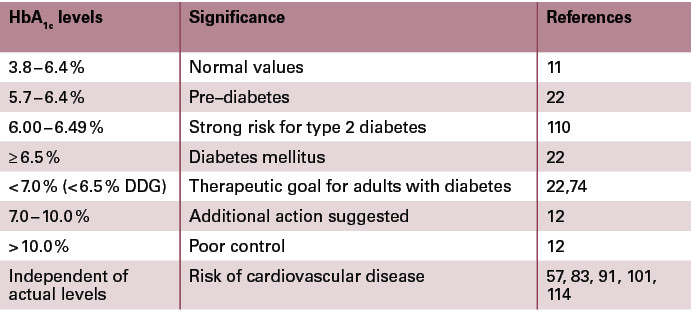 Maintaining less than 7% requires strict glycemic control, often with more potent medications.
Maintaining less than 7% requires strict glycemic control, often with more potent medications.
The more medicine administered, especially in the elderly or otherwise sick people, the greater the risk of low sugar episodes (hypoglycemia). If severe, hypoglycemia in the elderly can lead to a change in mental status, seizures or loss of consciousness, heart problems, falls leading to fractures, and in some cases, death [8]. Tighter glycemic control (lower HgA1c levels) may come at a higher cost for senior patients.
Additionally, older adults have higher rates of unidentified cognitive impairment and dementia, making it harder to follow strict diabetic treatment plans with glucose monitoring and frequent insulin dose adjustment. Older adults with diabetes also have a greater risk of hypoglycemia than younger adults [8].
All clinical guidelines and research institutions do, however, agree that the management of diabetes, especially in the elderly, needs to be personalized [7-10]. Therefore, frequently monitoring your HbA1c, either with Everlywell’s at-home HbA1c test or with continuous glucose monitoring, is the best way to know how under control your diabetes actually is. In the meantime, more studies need to be done to understand the healthiest HBA1c ranges for the ever-growing number of seniors with diabetes.
Therefore, frequently monitoring your HbA1c, either with Everlywell’s at-home HbA1c test or with continuous glucose monitoring, is the best way to know how under control your diabetes actually is. In the meantime, more studies need to be done to understand the healthiest HBA1c ranges for the ever-growing number of seniors with diabetes.
At what age should you check your HbA1C?
The CDC recommends getting a baseline A1C test if you’re an adult over age 45 or are under 45, are overweight, and have one or more risk factors for prediabetes or type 2 diabetes [11]. You are at risk for diabetes if you [11]:
- Have prediabetes
- Are overweight
- Are 45 years or older
- Have a parent, brother, or sister with type 2 diabetes
- Are physically active less than three times a week
- Have ever had gestational diabetes (diabetes during pregnancy) or given birth to a baby who weighed over 9 pounds
- Are an African American, Hispanic or Latino, American Indian, or Alaska Native; some Pacific Islanders and Asian American people are also at higher risk
- Have non-alcoholic fatty liver disease
Find out whether your HbA1c is normal for your age
Part of your wellness journey may be learning more about your risk for heart disease or diabetes.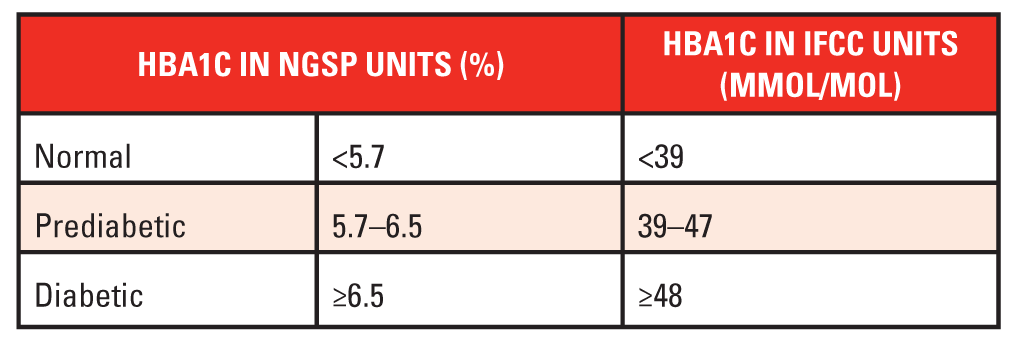 Maybe you have family members living with diabetes and are worried about your own risk. Perhaps you want to measure the impact of changes you made in your diet to lower your HbA1c. Everlywell can help you determine your metabolic wellness, using HbA1C. With our simple, quick, and convenient at-home HbA1c blood test, you can have your answers sooner rather than later.
Maybe you have family members living with diabetes and are worried about your own risk. Perhaps you want to measure the impact of changes you made in your diet to lower your HbA1c. Everlywell can help you determine your metabolic wellness, using HbA1C. With our simple, quick, and convenient at-home HbA1c blood test, you can have your answers sooner rather than later.
We know that higher A1C levels are linked to more diabetes complications such as coronary heart disease and stroke [1,2]. HbA1c is the test of choice for diagnosing prediabetes and diabetes, monitoring, and managing diabetes. Knowing your HbA1c value will help you be better informed for your next healthcare appointment – more prepared to discuss your personalized diabetes prevention or treatment plan.
Shop HbA1c Test
Prediabetic range for HbA1c
Can prediabetes be reversed?
What are the warning signs of prediabetes?
What is polydipsia?
References
- HbA1c. American Diabetes Association.
 URL. Updated 2022. Accessed December 22, 2022.
URL. Updated 2022. Accessed December 22, 2022. - Diabetes and Prediabetes. CDC. URL. Updated September 2, 2022. Accessed December 22, 2022.
- All About Your A1C. CDC. URL. Updated September 30, 2022. Accessed December 22, 2022.
- A1C. MedlinePlus. URL. Updated December 22, 2015. Accessed December 22, 2022.
- Dubowitz N, Xue W, Long Q, et al. Aging is associated with increased HbA1c levels, independently of glucose levels and insulin resistance, and also with decreased HbA1c diagnostic specificity. Diabet Med. 2014;31(8):927-935. doi:10.1111/dme.12459. URL.
- Pani LN, Korenda L, Meigs JB, and Driver C et al. Effect of aging on A1C levels in individuals without diabetes: evidence from the Framingham Offspring Study and the National Health and Nutrition Examination Survey 2001–2004. Diabetes Care 2008;31(10):1991–1996. https://doi.org/10.2337/dc08-0577. URL.
- Monami M, Vitale V, Lamanna C, et al. HbA1c levels and all-cause mortality in type 2 diabetic patients: epidemiological evidence of the need for personalised therapeutic targets.
 Nutr Metab Cardiovasc Dis. 2013;23(4):300-306. doi:10.1016/j.numecd.2012.01.003. URL.
Nutr Metab Cardiovasc Dis. 2013;23(4):300-306. doi:10.1016/j.numecd.2012.01.003. URL. - Rooney MR, Tang O, Echouffo Tcheugui JB, et al. American Diabetes Association framework for glycemic control in older adults: implications for risk of hospitalization and mortality. Diabetes Care. 2021;44(7):1524-1531. doi:10.2337/dc20-3045. URL.
- American Geriatrics Society Expert Panel on Care of Older Adults with Diabetes Mellitus. Moreno G, Mangione CM, Kimbro L, et al. Guidelines abstracted from the American Geriatrics Society Guidelines for Improving the Care of Older Adults with Diabetes Mellitus: 2013 update. J Am Geriatr Soc. 2013;61(11):2020-2026. doi:10.1111/jgs.12514. URL.
- Managing Older People With Type 2 Diabetes. International Diabetes Federation. URL. Updated March 5, 2017. Accessed December 22, 2022.
- Diabetes Risk Factors. CDC. URL. Updated April 5, 2022. Accessed December 22, 2022.
Glycated hemoglobin – laboratory article DNAOM
Views:
8412
Published:
/
Updated:
- Diabetes
- Obesity
- Stress
General
Glycated hemoglobin is a compound of glucose and hemoglobin found in red blood cells, a marker of diabetes mellitus. The concentration of glycated hemoglobin depends on the average blood glucose over a period of 6-12 weeks.
The concentration of glycated hemoglobin depends on the average blood glucose over a period of 6-12 weeks.
For diagnosing diabetes, an analysis to determine the level of glycated hemoglobin in the blood is indispensable. Since the sensitivity of the method allows you to most accurately establish and control the level of diabetes. When monitoring the condition of patients with this diagnosis, it is recommended to conduct this study at least once every 3 months.
Hemoglobin is a protein found in red blood cells (erythrocytes) that is capable of carrying oxygen to internal organs. In the body, it is presented in the form of several fractions; in addition, a significant number of states and forms of this protein have been identified. One of these fractions is hemoglobin A, the most common form (up to 98% of total hemoglobin). Hemoglobin A1c is part of hemoglobin A. When glucose enters the blood with food consumed, part of it, passing through the erythrocyte membrane, binds to hemoglobin A1c, during this interaction glycated hemoglobin is formed (the part of hemoglobin that combines with glucose is converted into hemoglobin HbA1c due to the glycation reaction). The level of the resulting compound is directly dependent on the concentration of glucose in the blood. This compound is quite stable and persists for 120 days until the destruction of the erythrocyte. The process of glycation and the formation of hemoglobin HbA1c is continuous and daily, since there is a constant renewal of red blood cells.
The level of the resulting compound is directly dependent on the concentration of glucose in the blood. This compound is quite stable and persists for 120 days until the destruction of the erythrocyte. The process of glycation and the formation of hemoglobin HbA1c is continuous and daily, since there is a constant renewal of red blood cells.
This clinical examination is indicated for patients with suspected or confirmed diabetes mellitus. Depending on the type of diabetes, the examination is prescribed from 2 to 4 times a year. the results of the analysis of the level of glycated hemoglobin may reflect the effectiveness of treatment. If the ongoing therapy does not give a successful result, then this allows the attending physician to quickly change tactics. Glycated hemoglobin is one of the most important indicators for patients with diabetes mellitus. At the stage of diagnosing this disease, this test is prescribed to detect uncontrolled jumps in glucose and helps in choosing the right therapy. In addition, a test for the level of glycated hemoglobin is included in a number of preventive examinations to detect the disease at an early stage, but additional examinations are required for a more accurate diagnosis. The determination of glycated hemoglobin is carried out if the patient is suspected of having diabetes and there are pronounced symptoms of high glucose:
In addition, a test for the level of glycated hemoglobin is included in a number of preventive examinations to detect the disease at an early stage, but additional examinations are required for a more accurate diagnosis. The determination of glycated hemoglobin is carried out if the patient is suspected of having diabetes and there are pronounced symptoms of high glucose:
- Great thirst, dry mouth;
- Increased fatigue;
- Frequent urination;
- A sharp decrease in vision;
- Weakened immunity and high susceptibility to infections.
Study preparation
It is recommended to donate blood in the morning, between 8 a.m. and 12 p.m. Blood is taken on an empty stomach, after 6-8 hours of fasting. Drinking water without gas and sugar is allowed. On the eve of the examination, food overload should be avoided.
Test indications
This examination is prescribed by the attending physician:
- To control blood glucose levels in diabetic patients in order to avoid severe complications on the kidneys, eyes, cardiovascular and nervous system.

- If diabetes mellitus is suspected and associated symptoms are present.
- For correction of the current therapy.
- For monitoring uncontrolled spikes in blood glucose for early diagnosis.
- For the purpose of prevention, for diagnosing a disease in the early stages of development.
Interpretation of results
There are several levels of reference values:
Normally, the level of glycated hemoglobin should not exceed 4.00-6.20%. In this case, there is no diabetes. A level above 6.5% indicates that the concentration of glucose in the blood is critical, and we can talk about the diagnosis of “diabetes mellitus” (in combination with other examinations). A condition characterized by a glycated hemoglobin level of 5.7-6.4% can be called prediabetes. This means that the level of glucose tolerance is impaired and there is a risk of diabetes.
Low levels of glycated hemoglobin may indicate an abnormal structure of red blood cells, anemia.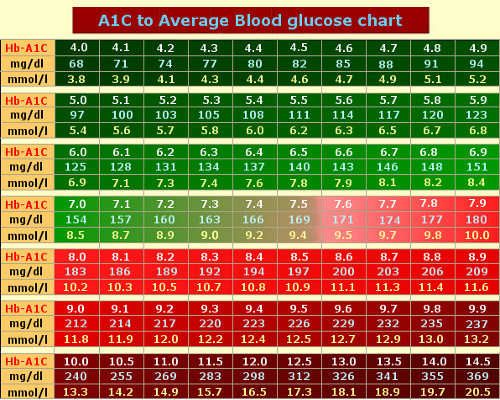 Also, after heavy bleeding, this test can give false negative results.
Also, after heavy bleeding, this test can give false negative results.
The glycated hemoglobin level reflects the average glucose level over 3 months, not at a specific point in time. Therefore, it is possible to influence its level downward only by reviewing your diet. Proper nutrition will help reduce weight and improve metabolism, which also has a positive effect on the level of glycated hemoglobin.
The diet should consist mostly of vegetables, fruits, lean fish, nuts, legumes. Reduce consumption of fatty and fried foods.
Increase daily activity, sports, walks. This will help optimize the weight.
Maintain emotional calm. Stress negatively affects metabolism. In the fight against negative emotions, breathing exercises and meditation will help.
Get tested for 14.115 Glycated hemoglobin.
References
- https://www.diacheck.ru/blogs/stati-sm-diachek/chto-takoe-glikirovanij-gemoglobin
- https://russjcardiol.elpub.
 ru/jour/article/viewFile/3839/2865
ru/jour/article/viewFile/3839/2865
Author:
Latynina Yuliya Sergeevna
Specialization:
biologist of clinical laboratory diagnostics
- Diabetes
- Obesity
- Stress
share:
Recommended tests
14.115
Glycated hemoglobin
can be taken at home
785 ₽
1 day
?
*The specified period does not include the day of taking the biomaterial
* Taking biomaterial is paid separately:
200 rub
Similar articles
Author:
Latynina Yulia Sergeevna
C-REACTIVE PROTEIN
- Stress
- The cardiovascular system
- Immunity
- infections
- Inflammation
Author:
Baktyshev Alexey Ilyich
Check-up “Diabetes”
- Diabetes
- Obesity
- Prevention
How to prevent diabetes?
- Obesity
- Diabetes
Glycated and glycosylated hemoglobin values: what you need to know
Contents
- 1 Glycated and glycosylated hemoglobin values
- 1.
 1 Hemoglobin and its values
1 Hemoglobin and its values - 1.2 What is glycated hemoglobin ?
- 1.3
- 1.4 Glycated hemoglobin
- 1.5 The role of glycated hemoglobin in the diagnosis of diabetes
- 1.6 Relationship between glycated hemoglobin and blood glucose levels
- 1.7 Glycated hemoglobin norms for different age groups
- 1.8 How to raise or lower the level of glycated hemoglobin?
- 1.9 What is glycosylated hemoglobin?
- 1.10 Glycosylated hemoglobin
- 1.11 Similarities and differences between glycated and glycated hemoglobin
- 1.12 Importance of monitoring glycated and glycosylated hemoglobin
- 1.13 Q&A:
- 1.13.0.1 What is glycated hemoglobin and why is it important for diabetics?
- 1.13.0.2 What are the optimal glycated hemoglobin levels for diabetics?
- 1.13.0.3 How can I lower glycated hemoglobin?
- 1.13.0.4 What can affect the accuracy of glycated hemoglobin results?
- 1.
 14 Related video:
14 Related video:
- 1.
Norms of glycated and glycosylated hemoglobin in the human body. The significance of these indicators for the diagnosis and control of diabetes mellitus. The difference between glycated and glycosylated hemoglobin and their role in assessing blood sugar over the past two to three months. Review of methods for analysis and interpretation of results.
Glycated hemoglobin (HbA1c) and glycosylated hemoglobin (GHb) are indicators that are used to assess the level of glycemia in patients with diabetes. Hemoglobin is a protein found in red blood cells and is responsible for transporting oxygen throughout the body. With elevated blood glucose, part of the hemoglobin binds to glucose, forming a glycated component. Therefore, the level of glycated and glycosylated hemoglobin allows us to estimate the average concentration of glucose in the blood for 2-3 months.
Glycated and glycosylated hemoglobin levels depend on age, sex and presence of diseases such as diabetes.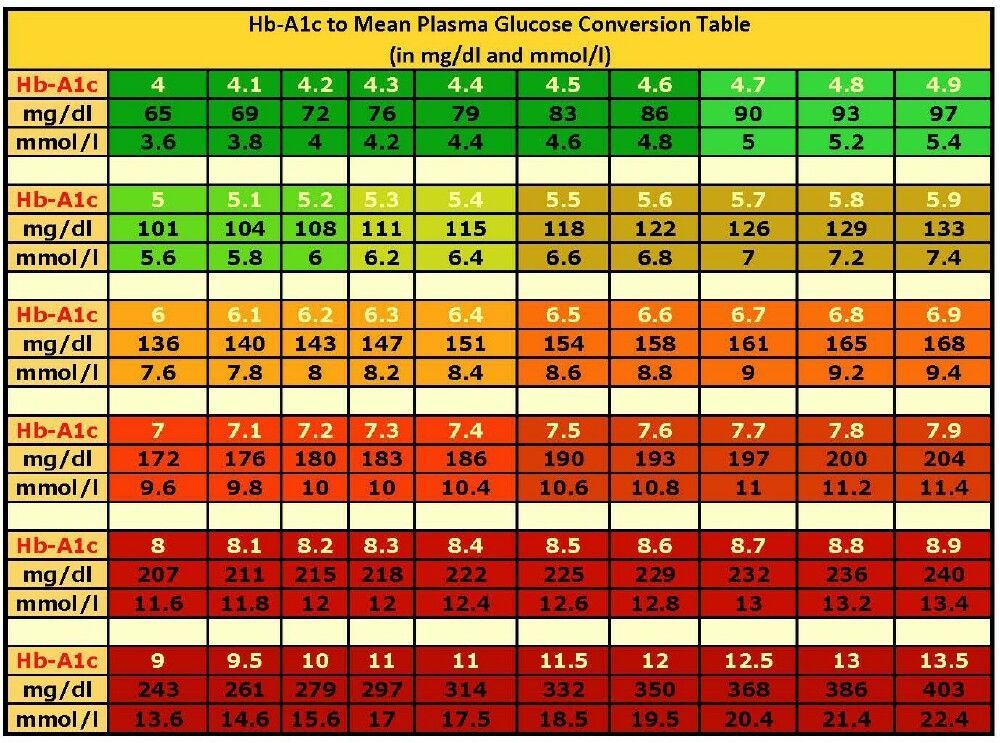 In the absence of diabetes, HbA1c and GHb levels are approximately 4-6%. However, in the presence of diabetes, the goal of treatment is to achieve a certain level of glycated hemoglobin, which will allow control of blood glucose levels and reduce the risk of complications.
In the absence of diabetes, HbA1c and GHb levels are approximately 4-6%. However, in the presence of diabetes, the goal of treatment is to achieve a certain level of glycated hemoglobin, which will allow control of blood glucose levels and reduce the risk of complications.
Reducing glycated hemoglobin to the desired level may require changes in diet, physical activity, and medication to lower blood glucose levels. It is also important to conduct regular tests to monitor the level of glycated and glycosylated hemoglobin and evaluate the effectiveness of treatment.
Remember that glycated and glycosylated hemoglobin are important indicators that help control blood glucose levels in patients with diabetes. Compliance with the norm of glycated hemoglobin helps prevent the development of complications and maintain good health.
Hemoglobin and its meanings
Hemoglobin is a complex protein complex found in red blood cells. It is responsible for transporting oxygen from the lungs to tissues and vice versa, as well as transporting carbon dioxide from tissues to the lungs. Normal hemoglobin levels vary by gender and age.
Normal hemoglobin levels vary by gender and age.
Low hemoglobin levels can indicate various diseases or disorders in the body. It can occur due to a deficiency of iron, vitamin B12, or folic acid. Also, low hemoglobin can be associated with blood loss or chronic diseases.
A high hemoglobin level can be a sign of dehydration or polycythemia, a disorder in which the number of red blood cells is higher than normal. Also, a high level of hemoglobin may be the result of a long stay at high altitudes, in which the body tries to compensate for the lack of oxygen.
Changes in hemoglobin levels can be associated with various factors, so its importance is important to consider in the diagnosis and control of various diseases.
What is glycated hemoglobin?
Glycated hemoglobin is the result of a glycation process that occurs in the body. Glycation is a chemical reaction between glucose and hemoglobin, the main function of which is to transport oxygen in the body.
During glycation, glucose binds to amino acids to form glycated products. These glycated foods can lead to various complications associated with diabetes and other disorders of glucose metabolism.
Evaluation of glycated hemoglobin is an important indicator for long-term control of blood glucose levels. An increase in glycated hemoglobin indicates inadequate glucose control and may indicate a metabolic problem.
The value of glycated hemoglobin is determined as a percentage. Usually the level of glycated hemoglobin in healthy people is from 4% to 6%. If the level exceeds 7%, this may indicate the presence of diabetes or other metabolic disorders.
Glycated hemoglobin
Glycated hemoglobin (HbA1c) is an important measure of blood sugar control in patients with diabetes. This indicator reflects the average level of glucose in the blood over the past 2-3 months. Glycated hemoglobin is formed by the binding of glucose to hemoglobin in red blood cells.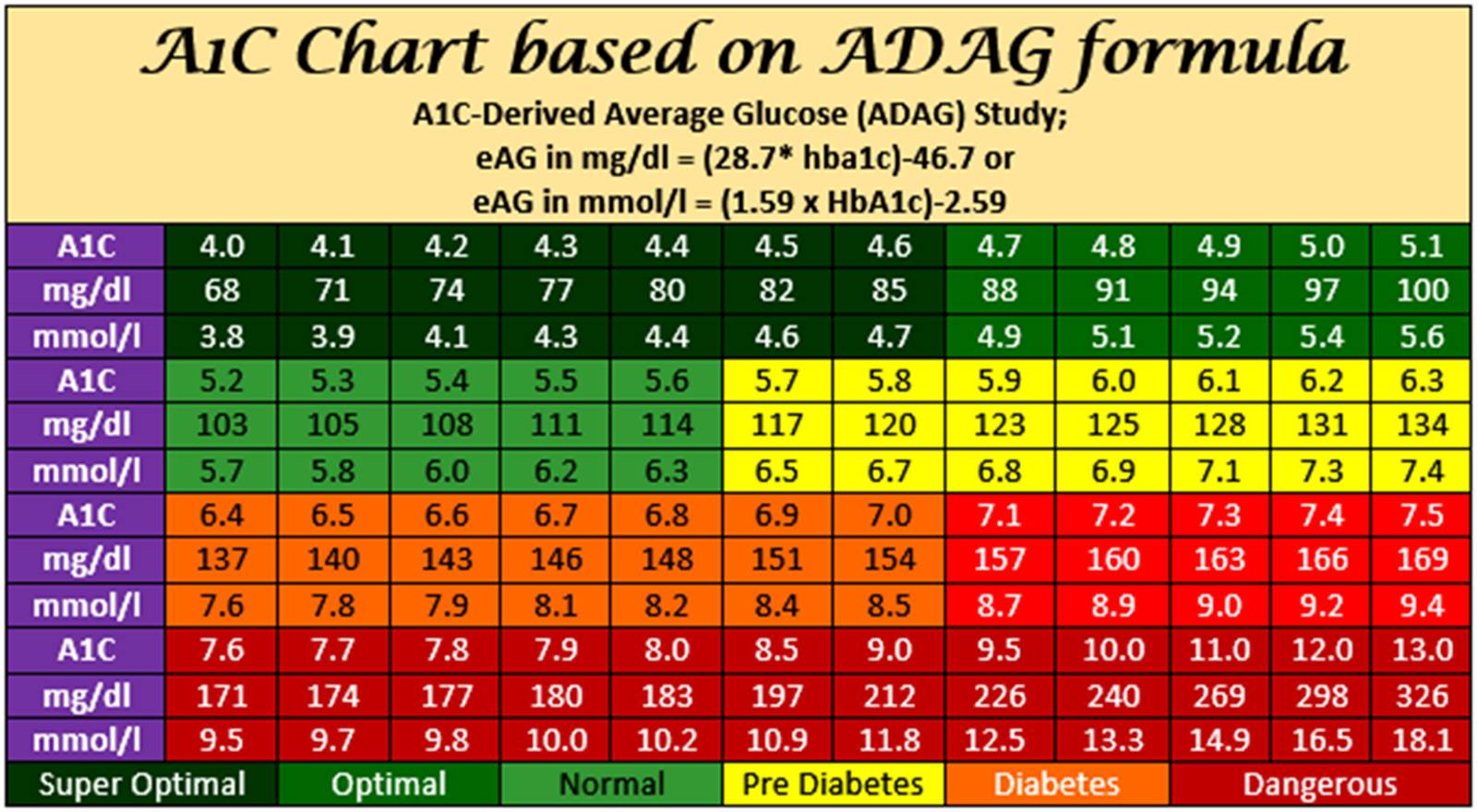
Normal HbA1c is less than 5.7%. A level of 5.7% to 6.4% indicates a pre-diabetic condition that may progress to the development of diabetes. An HbA1c level above 6.5% usually indicates the presence of diabetes. The optimal level of glycated hemoglobin for most diabetic patients is less than 7%.
The measurement of glycated hemoglobin is an important part of diabetic management and helps evaluate the effectiveness of treatment. The higher the HbA1c level, the greater the risk of complications from diabetes, such as heart and kidney disease. Therefore, regular monitoring of the level of glycated hemoglobin and maintaining it at an optimal level is important to prevent complications and improve the quality of life of patients with diabetes.
Role of glycated hemoglobin in the diagnosis of diabetes
Glycated hemoglobin, or HbA1c, is an important biomarker for diagnosing and monitoring diabetes. It is a form of hemoglobin that results from the binding of glucose to hemoglobin in red blood cells. The level of glycated hemoglobin reflects the average level of glucose in the blood over the past 2-3 months.
The level of glycated hemoglobin reflects the average level of glucose in the blood over the past 2-3 months.
Glycated hemoglobin measurement is a reliable and convenient way to determine the degree of glycemic control in diabetic patients. The results of the HbA1c analysis can be used to judge how well the patient controls blood sugar levels and assess the effectiveness of the treatment.
Normal glycated hemoglobin is less than 5.7%. A value between 5.7% and 6.4% indicates a pre-diabetic state, which means an increased risk of developing diabetes in the future. A level above 6.5% is a diagnostic criterion for diabetes.
Regular HbA1c testing can effectively control blood sugar levels and prevent complications associated with diabetes. Regular monitoring allows you to timely adjust treatment and control the progression of the disease.
Relationship between glycated hemoglobin and blood glucose
Glycated hemoglobin, also known as HbA1C, is a measure of the average blood glucose level over the past 2-3 months. The HbA1C level is measured as a percentage and reflects the number of glycated red blood cells in the blood. The higher the glucose level, the more red blood cells become glycated.
The HbA1C level is measured as a percentage and reflects the number of glycated red blood cells in the blood. The higher the glucose level, the more red blood cells become glycated.
The relationship between glycated hemoglobin and blood glucose levels is inherent. Elevated blood glucose leads to an increase in the amount of glycated hemoglobin. This is because glucose can bind to hemoglobin without the participation of insulin.
The HbA1C level is an important indicator of blood glucose control in patients with diabetes. The higher the HbA1C, the worse the blood glucose control. The optimal HbA1C level for most diabetics is 6.5-7%. When this level is reached, the risks of developing complications such as damage to the heart, kidneys and eyes are significantly reduced.
Studying the relationship between glycated hemoglobin and blood glucose levels allows clinicians and patients to better control diabetes and take action to prevent it. Continuous measurement of HbA1C levels and adjustment of treatment in accordance with this indicator allows you to achieve stable and effective blood glucose control, improve quality of life and prevent the development of serious complications.
Glycated hemoglobin ranges for different age groups
Glycated hemoglobin, or HbA1c, is an important measure of blood sugar control in patients with diabetes. It displays the average concentration of glucose in the blood over the previous 2-3 months and helps to determine the effectiveness of diabetic therapy. Guideline values for HbA1c differ depending on the age of the patient.
In adults without diabetes, normal HbA1c values are between 4% and 5.6%. In children and adolescents without diabetes, the HbA1c level is usually around 4-5%. However, in diabetic patients, HbA1c guideline values vary and depend on the specific type of diabetes and the target glycemic level of the individual treatment plan.
For most adult patients with type 2 or uncomplicated type 1 diabetes, it is recommended to maintain an HbA1c level below 7%. However, for some patient groups, such as pregnant women with diabetes or the elderly, more stringent HbA1c reduction targets can be set, for example, to 6.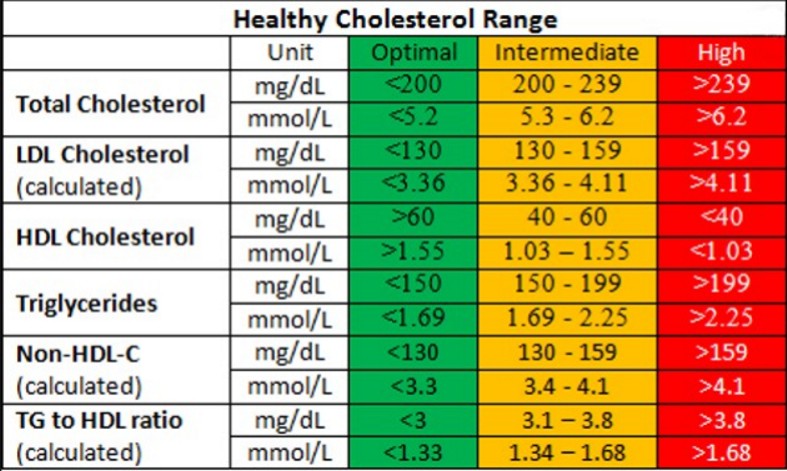 5% and 6%, respectively.
5% and 6%, respectively.
In the case of children and adolescents with type 1 diabetes, the goal of HbA1c control is usually less than 7.5% to prevent complications of micro- and macroangiopathy. However, for younger children, a higher range of normal HbA1c values may be set to prevent the risk of hypoglycemia.
How to increase or decrease the level of glycated hemoglobin?
To increase glycated hemoglobin levels, follow certain diabetes management guidelines and control blood glucose levels. It is important to take your medications prescribed by your doctor and follow your food intake.
Watch your diet and follow a diet rich in natural products. Limit consumption of fast carbohydrates, unhealthy fats and sugar. Include more vegetables, fruits, cereals, protein foods in the diet.
Physical activity will help lower your glycated hemoglobin levels. Regular exercise, sports, walking provide an improvement in metabolic processes in the body and the normalization of blood glucose levels.
It is important to follow the dosage regimen prescribed by your doctor. Medications must be taken on time and in the correct dosage. Regularly monitor the level of glycated hemoglobin using tests.
In addition, a positive emotional background and avoidance of stress will help normalize the level of glycated hemoglobin. Strive for psychological comfort, engage in relaxation, participate in activities that are pleasant for you, communicate with loved ones.
What is glycated hemoglobin?
Glycosylated hemoglobin aka hemoglobin A1c is a form of hemoglobin associated with blood glucose. Glycosylated hemoglobin is an indicator of the average blood glucose level over the past 2-3 months. This is due to the fact that glycosylated hemoglobin is formed in the process of long-term interaction of hemoglobin with glucose.
The level of glycated hemoglobin is one of the main criteria for diagnosing and managing diabetes.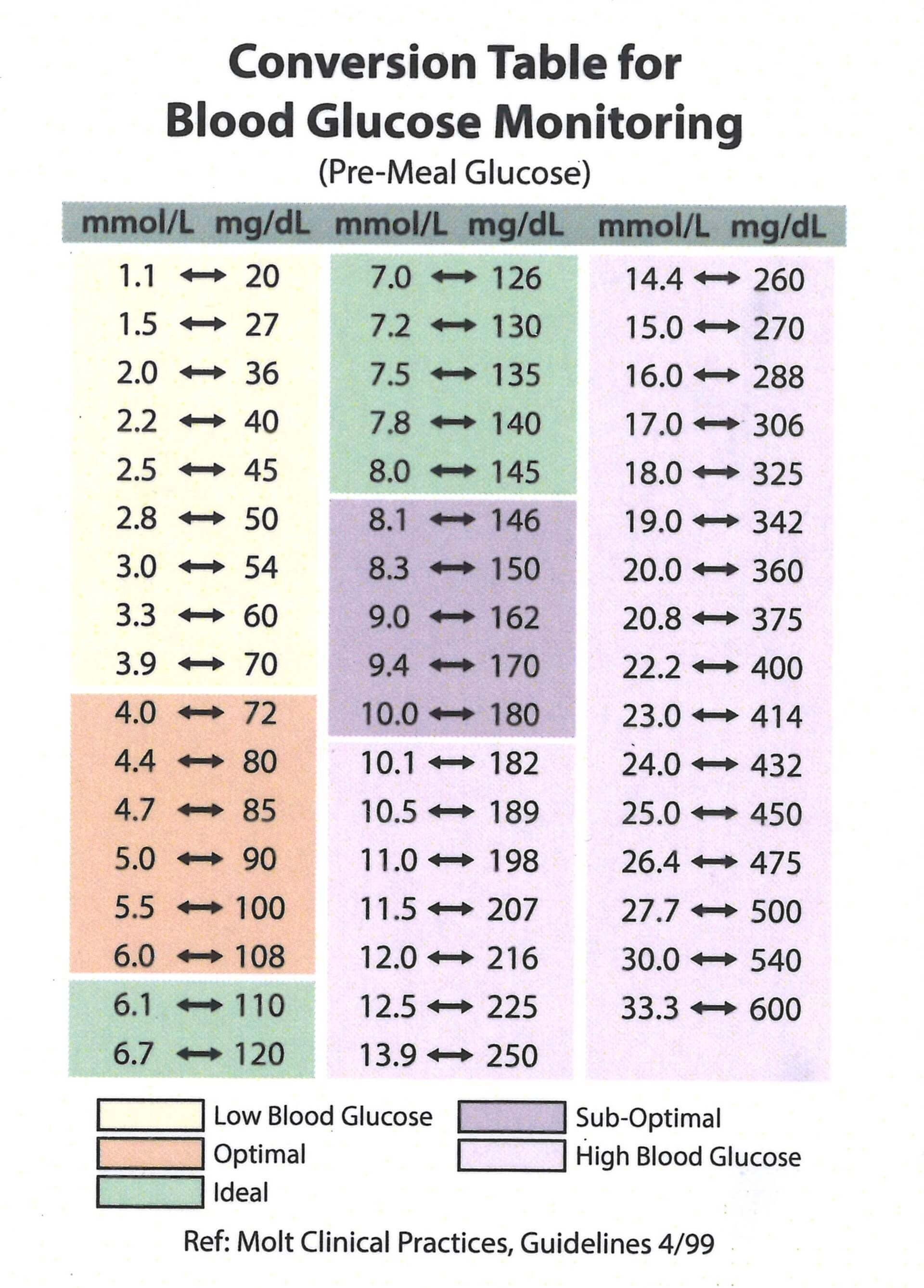 Elevated levels of glycosylated hemoglobin indicate inadequate control of blood glucose levels and may indicate a risk of complications associated with diabetes.
Elevated levels of glycosylated hemoglobin indicate inadequate control of blood glucose levels and may indicate a risk of complications associated with diabetes.
Chronic hyperglycemic background affects the binding of hemoglobin to glucose in red blood cells. As the average blood glucose level increases, so does the amount of glycosylated hemoglobin, which can be detected by a blood test.
Glycosylated hemoglobin is measured to give an idea of the average concentration of glucose in the blood, and this indicator is more reliable and stable than the usual sugar load on the body and other blood glucose tests.
Glycosylated hemoglobin
Glycosylated hemoglobin (HbA1c) is an important indicator of blood glucose levels during the last 2-3 months. This indicator is used to diagnose and control diabetes.
Normal HbA1c levels range from 4% to 5.6%. In diabetic patients, an HbA1c level of less than 7% is considered normal. This indicates good control of blood glucose levels. However, in some patients, an individual HbA1c target value can be set.
However, in some patients, an individual HbA1c target value can be set.
Glycosylated hemoglobin reflects the average blood glucose level over a period of 2 to 3 months, since the lifespan of red blood cells is about 120 days. This distinguishes it from glycochemoglobin, which is a combination of glucose and hemoglobin and can only be measured directly at the time of measurement.
Glycosylated hemoglobin is measured in the laboratory using a blood test. It is recommended to measure HbA1c twice a year to control diabetes. It is important to note that HbA1c is an additional tool for monitoring blood glucose levels and does not replace the daily measurement with a glucometer.
Similarities and differences between glycated and glycosylated hemoglobin
Glycated hemoglobin and glycated hemoglobin are two concepts that refer to the state of hemoglobin in the blood and help determine the level of sugar in the body over the past few months. They are important biomarkers for diabetes and serve to monitor and evaluate the effectiveness of treatment in patients with this disease.
They are important biomarkers for diabetes and serve to monitor and evaluate the effectiveness of treatment in patients with this disease.
Glycated hemoglobin is a form of hemoglobin that results from the reaction of glucose binding to unattractive amino acid residues within the hemoglobin molecule. This happens gradually and regardless of the current blood sugar level. Glycated hemoglobin represents the average blood glucose level over the previous 2-3 months and is usually measured as a percentage of total hemoglobin.
Glycosylated hemoglobin, on the other hand, refers to hemoglobin to which glucose and other sugars are attached as a result of constant exposure to high blood sugar levels over an extended period of time. Glycosylated hemoglobin is used to measure the average blood sugar concentration over the past 6-8 weeks and is usually measured in millimoles of glucose associated with a gram of hemoglobin.
Both indicators are reliable indicators of blood glucose levels and help evaluate the effectiveness of sugar control in diabetes. Their regular measurement allows patients and their doctors to determine how well their condition is being controlled and take the necessary measures to maintain a stable blood sugar level.
Their regular measurement allows patients and their doctors to determine how well their condition is being controlled and take the necessary measures to maintain a stable blood sugar level.
The importance of monitoring glycated and glycosylated hemoglobin levels
Monitoring of glycated and glycosylated hemoglobin levels is an important tool for diagnosing and managing diabetes mellitus. Hemoglobin is a protein found in red blood cells and is responsible for transporting oxygen in the body.
Glycated hemoglobin (HbA1c) is a combination of hemoglobin and glucose and measures the average blood glucose level over the past 2-3 months. HbA1c measurement shows how well diabetes is being controlled and provides information on the extent of organ and tissue damage due to high blood glucose levels.
Glycosylated hemoglobin (HbA1) is a general measure of hemoglobin glycation and includes not only bonding to glucose, but also to other substances. Elevated HbA1 levels may indicate hyperglycemia and metabolic disorders.
Monitoring the level of glycated and glycosylated hemoglobin allows you to determine the effectiveness of the ongoing treatment of diabetes, as well as adjust the treatment plan and measures taken to maintain normal blood sugar. Regular measurement of glycated and glycosylated hemoglobin is essential to control and prevent the development of diabetes complications such as cardiovascular disease, retinopathy, nephropathy and neuropathy.
The level of glycated and glycosylated hemoglobin should be within certain limits, which depend on age, gender, health status and type of diabetes. These indicators help to assess the degree of compensation of the disease and the patient’s ability to self-control diabetes.
In general, monitoring of glycated and glycosylated hemoglobin levels is an important component of care for patients with diabetes mellitus and allows you to more accurately control blood sugar levels, prevent complications and achieve optimal disease control.
Q&A:
What is glycated hemoglobin and why is it important for diabetics?
Glycated hemoglobin is a form of hemoglobin that is bound to glucose in the blood. It is considered primarily for the control of blood sugar levels in diabetics, as it reflects the average concentration of glucose over the past 2-3 months. This allows you to evaluate the effectiveness of treatment and control the risks associated with unstable blood sugar levels.
What are the optimal glycated hemoglobin levels for diabetics?
The optimal level of glycated hemoglobin for diabetics is less than 6.5%. This indicator indicates sufficient control of blood sugar levels and reduces the risk of complications associated with diabetes. However, it is necessary to take into account the individual characteristics of the patient and consult with the doctor about the desired targets.
How can I lower my glycated hemoglobin?
If the level of glycated hemoglobin exceeds the optimal values, urgent measures must be taken to normalize the level of sugar in the blood.

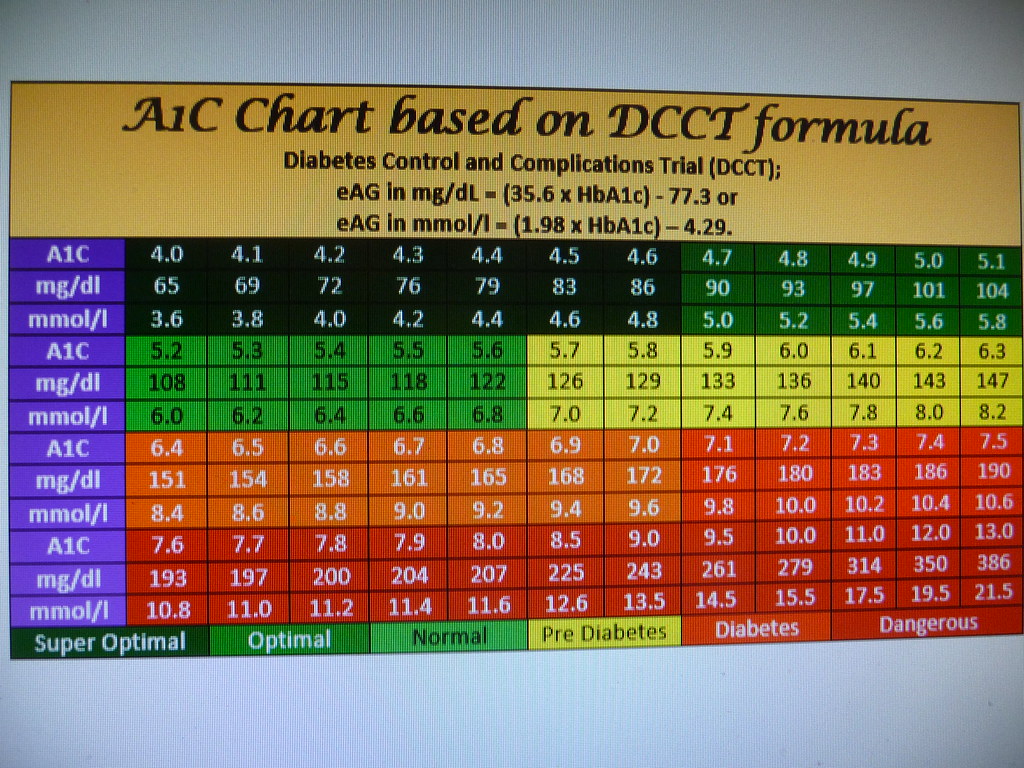 With a proper lifestyle and diet management, you can control your diabetes at this level through Diabetes Reversal Method and can attain a normal range of HbA1c values is 6.0% to 6.4%, or 42 to 47 mmol/mol.
With a proper lifestyle and diet management, you can control your diabetes at this level through Diabetes Reversal Method and can attain a normal range of HbA1c values is 6.0% to 6.4%, or 42 to 47 mmol/mol. A person can do this test at any time of the day. But, the other diabetes tests need fasting. For this test, a person has to fast for at least 5-6 hours. After the fasting test, there is another following meal blood test. This helps in giving the levels of your blood sugar post-meal.
A person can do this test at any time of the day. But, the other diabetes tests need fasting. For this test, a person has to fast for at least 5-6 hours. After the fasting test, there is another following meal blood test. This helps in giving the levels of your blood sugar post-meal.
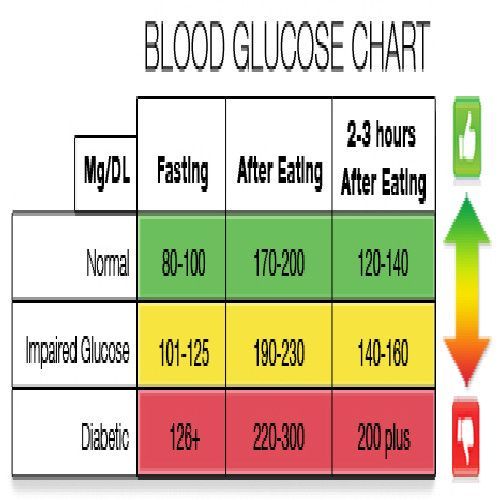 medifee.com/tests/hba1c-cost/
medifee.com/tests/hba1c-cost/ 4%
4%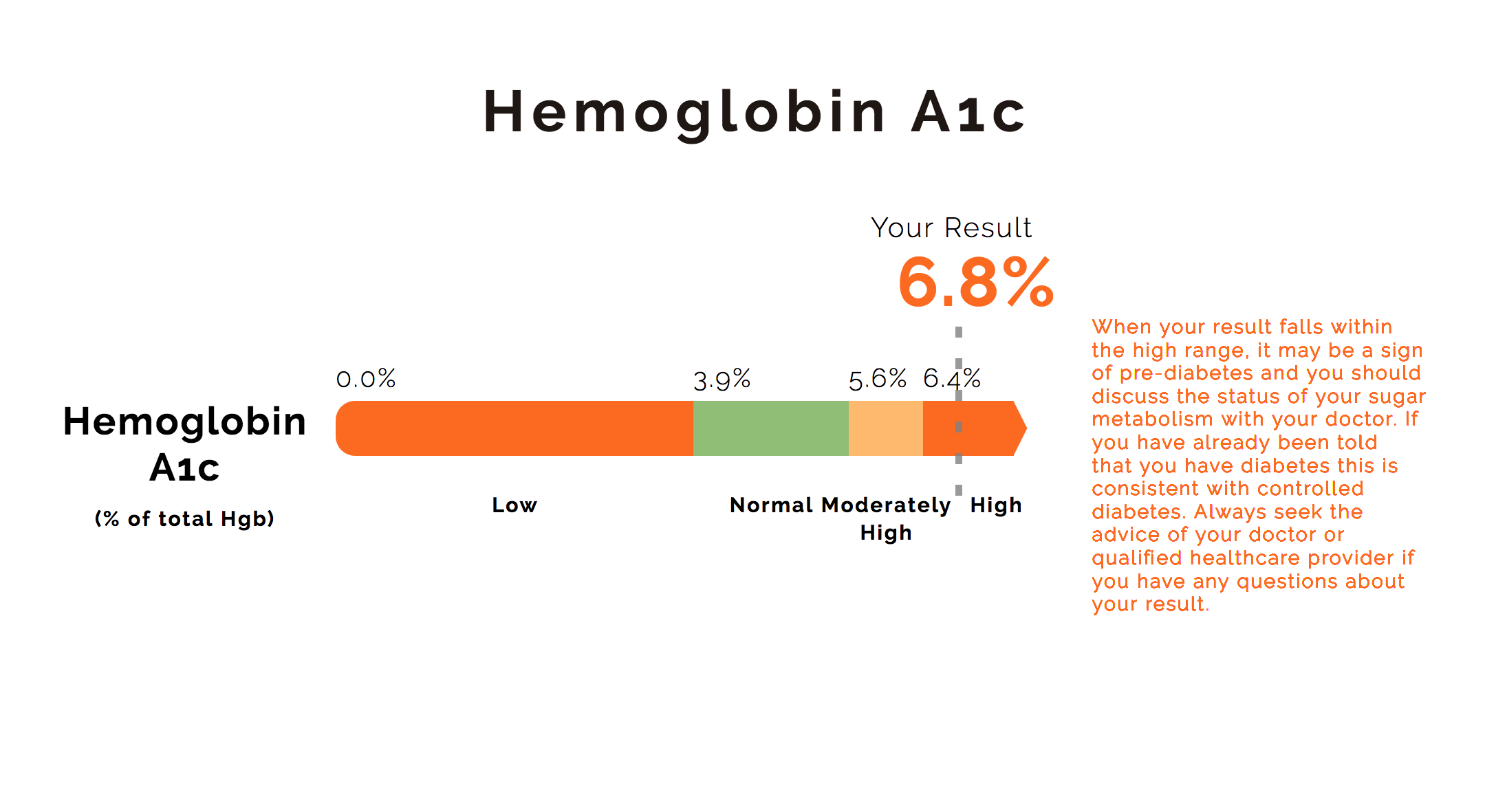 URL. Updated 2022. Accessed December 22, 2022.
URL. Updated 2022. Accessed December 22, 2022.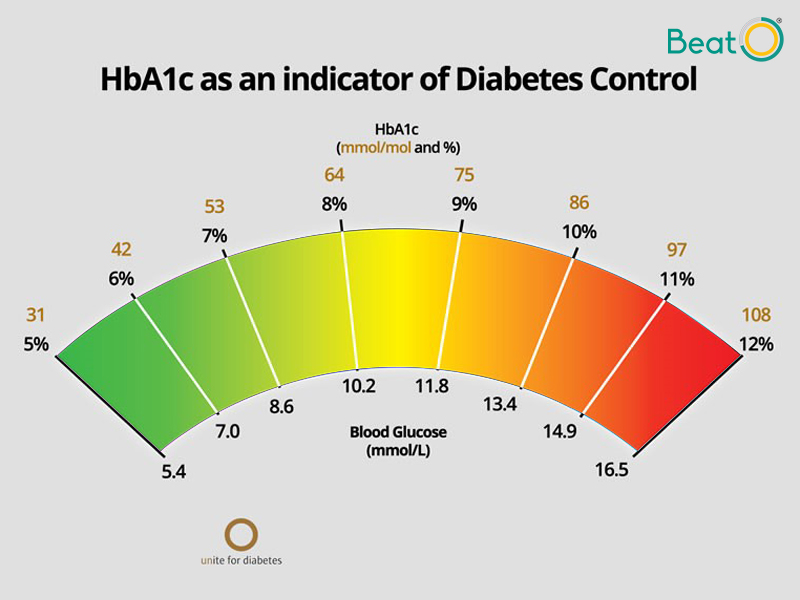 Nutr Metab Cardiovasc Dis. 2013;23(4):300-306. doi:10.1016/j.numecd.2012.01.003. URL.
Nutr Metab Cardiovasc Dis. 2013;23(4):300-306. doi:10.1016/j.numecd.2012.01.003. URL.
 ru/jour/article/viewFile/3839/2865
ru/jour/article/viewFile/3839/2865 1 Hemoglobin and its values
1 Hemoglobin and its values 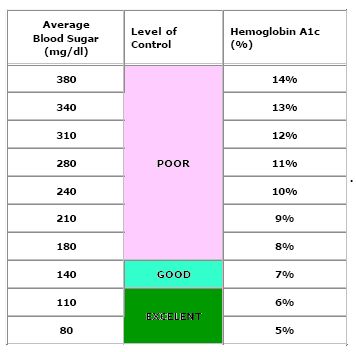 14 Related video:
14 Related video: